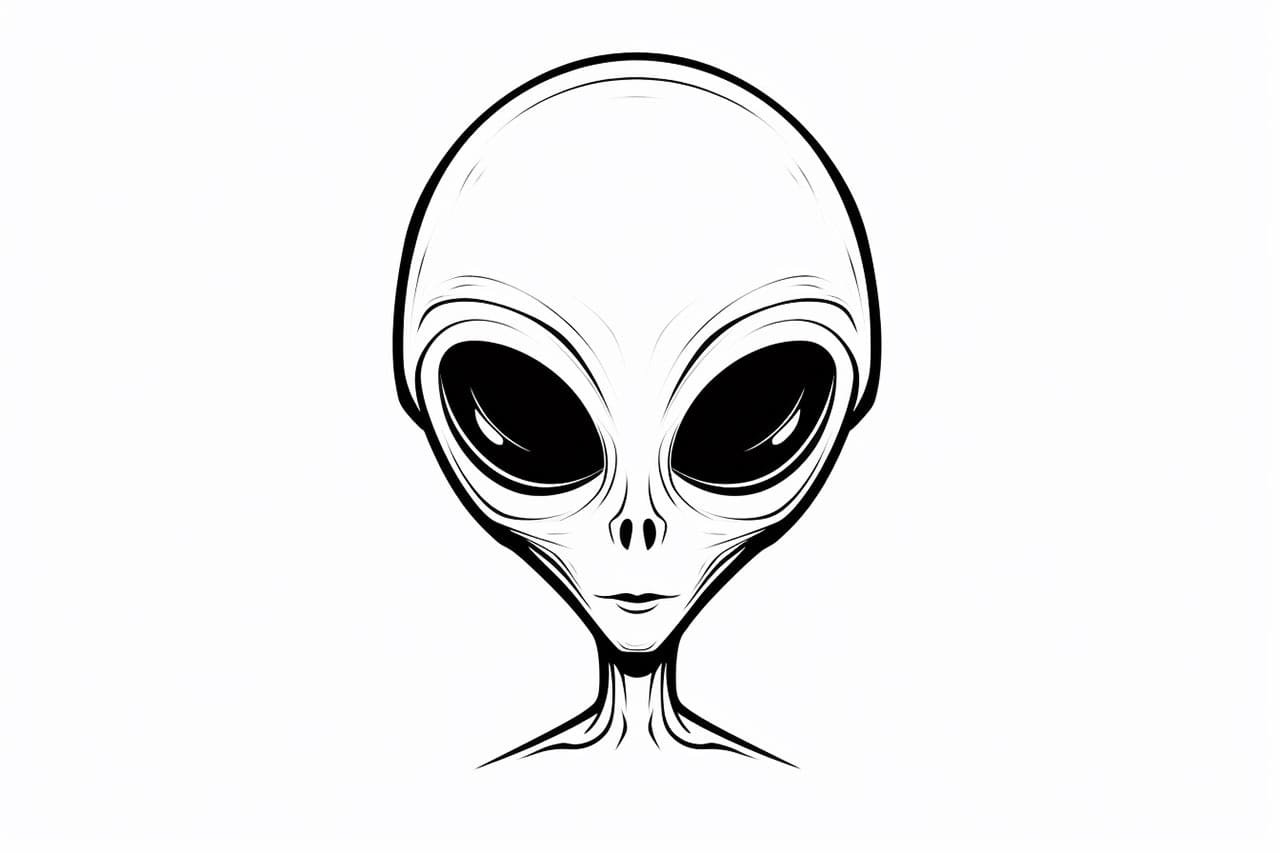Welcome to this step-by-step guide on how to draw an alien! Whether you are an aspiring artist or simply want to have fun creating your own extraterrestrial characters, this article will provide you with clear and concise instructions to help you bring your alien to life on paper. So grab your materials and let’s get started!
Materials Required
Before we begin, make sure you have the following materials ready:
- Pencil: A regular pencil will do just fine for sketching and outlining.
- Paper: Any type of paper will work, but a sheet of white drawing paper or sketchbook paper is recommended for better results.
- Eraser: You’ll need an eraser to correct any mistakes or make adjustments.
- Pens or markers (optional): If you want to add color or definition to your alien, pens or markers can come in handy.
With your materials in hand, let’s dive into the step-by-step process of drawing an alien!
Step 1: Basic Shape
Start by drawing a rough outline of the alien’s head using a circular shape. Don’t worry about perfection at this stage; it’s just a starting point.
Step 2: Facial Features
Add two large oval-shaped eyes in the center of the head. Place them slightly apart to give your alien a cute or quirky look. Next, draw a small, curved line below the eyes for the mouth. You can experiment with different mouth shapes to give your alien its own unique expression.
Step 3: Ears or Antennas
Decide whether your alien will have ears or antennas on its head. Draw two small pointed ears or antennas on either side of the head, extending upward. You can get creative with the shape and size depending on the style of your alien.
Step 4: Body and Limbs
Extend two lines downward from the head to create the body. Decide on the pose of your alien — standing, sitting, or floating — and draw the limbs accordingly. Add simple shapes, like rectangles or ovals, to represent arms and legs.
Step 5: Details and Textures
Now it’s time to add some details to your alien. Experiment with different shapes for the limbs, such as elongated fingers or multiple joints. You can also add spots, scales, or patterns to the body for a more interesting and unique look.
Step 6: Clothing or Accessories
If you want to add some extra flair to your alien, consider giving it some clothing or accessories. Draw a hat, a cape, or even a futuristic gadget to enhance its character and personality.
Step 7: Finalize the Lines
Take a darker pencil or pen and trace over the final lines of your alien. Pay attention to the details and make any necessary adjustments as you go along. This will give your drawing a more defined and polished appearance.
Step 8: Coloring (Optional)
If you prefer a colored alien, now is the time to bring it to life! Use your pens or markers to carefully color in your drawing, paying attention to shading and highlighting to add depth and dimension. Don’t be afraid to get creative and experiment with different color combinations!
Conclusion
Congratulations on completing your alien drawing! By following these step-by-step instructions, you have successfully created your very own extraterrestrial creature. Remember, drawing is all about unleashing your creativity and having fun, so don’t be afraid to experiment and add your personal touch to your alien. Keep practicing, and soon you’ll be able to create even more unique and captivating characters!
Fun Facts About Aliens
Aliens, or extraterrestrial beings, have always sparked curiosity and fascination, both in science and in popular culture. Here are some fun and interesting facts about them:
- Definition Ambiguity: The term “alien” can refer to any form of life not from Earth. However, no universally accepted scientific evidence currently proves the existence of extraterrestrial life.
- Search Efforts: Projects like SETI (Search for Extraterrestrial Intelligence) use radio telescopes to listen for signals from intelligent alien life forms. They’ve been searching the cosmos for decades, showcasing humanity’s hope of making contact.
- Exoplanets Galore: Scientists have discovered thousands of exoplanets (planets outside our solar system) in the habitable zone, where conditions may be right for life as we know it. This significantly increases the chances that alien life exists.
- Microbial Life Possibilities: Mars, Europa (a moon of Jupiter), and Enceladus (a moon of Saturn) are considered potential hosts for microbial life within our solar system due to evidence of water, either in the past or currently.
- UFOs and Government Interest: Unidentified Flying Objects (UFOs), now often termed Unidentified Aerial Phenomena (UAP), have been subject to official investigations by governments around the world, indicating a serious interest in phenomena potentially linked to aliens.
- Cultural Impact: Aliens have been a staple of science fiction for over a century, inspiring countless movies, books, and TV shows. This has shaped public perceptions and expectations about extraterrestrial life.
- The Wow! Signal: In 1977, a strong radio signal was detected by the Big Ear radio telescope, which has not been explained or repeated. It lasted for 72 seconds and is considered by some as the best evidence yet of extraterrestrial communication.
- Fermi Paradox: This paradox questions why, with billions of stars in the Milky Way galaxy similar to the Sun, and many of them much older, there is no clear evidence of alien life. It’s a central puzzle in the study of extraterrestrial life.
- Exobiology: This branch of science deals with the study of the origin, evolution, distribution, and future of life in the universe, including the search for extraterrestrial life, without having direct evidence of its existence.
- Ancient Aliens Theory: Some people believe that aliens visited Earth in ancient times and influenced human culture, technology, and religion. While these theories are widely popularized in media, they are not supported by mainstream archaeology or science.
These facts highlight the intrigue and mystery surrounding the concept of aliens, blending scientific inquiry with the boundless imagination of human culture.


